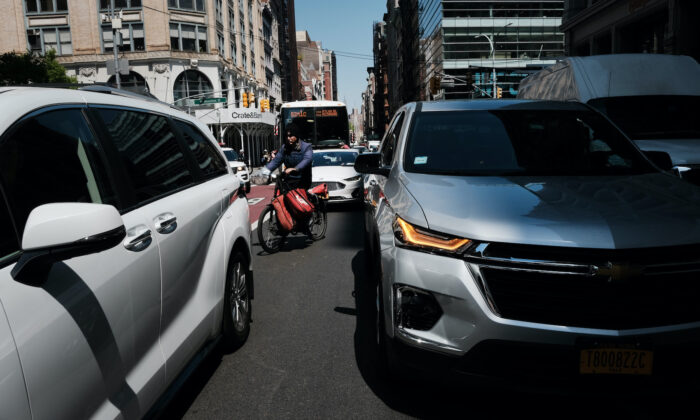New York City’s Congestion Pricing Program Begins on January 5: What You Should Know
The highly debated and contentious plan will impose a new daily toll on drivers entering lower Manhattan.
On January 5, 2025, the long-discussed and hotly contested congestion pricing policy will be implemented in New York City.
With passionate advocates and equally strong opponents, this measure is anticipated to have significant effects on commuters, the transit network, the city itself, and the environment.
The Metropolitan Transit Authority (MTA) aims to generate funds for comprehensive upgrades to New York’s aging transit infrastructure through the introduction of congestion pricing.
What Is Congestion Pricing?
Congestion pricing refers to the policy of charging a standard fee of $9 for drivers of cars, SUVs, small vans, and pickup trucks who enter Manhattan below 60th Street from 5 a.m. to 9 p.m. on weekdays and from 9 a.m. to 9 p.m. on weekends.
Does the Fare Vary?
Indeed, the MTA has developed a comprehensive plan with various pricing tiers based on vehicle type and entry time.
During off-peak hours, from 9 p.m. to 5 a.m. on weekdays and from 9 p.m. to 9 a.m. on weekends, the $9 toll reduces to $2.25 for those driving cars, SUVs, small vans, and pickup trucks.
Small trucks and buses will incur a charge of $14.40 during peak hours and $2.25 during non-peak hours, while motorcycle riders will pay $4.50 during peak hours and $1.05 during non-peak hours.
Commuters earning under $50,000 annually may qualify for discounted rates following their tenth commute within a month.
Starting in 2028 and beyond, toll rates are expected to increase, contingent upon approval from the governor and the MTA.
Was $9 Always the Plan?
No, the original proposed standard fare was $15, but backers of the initiative faced significant political hurdles as proponents claimed that such an amount was too prohibitive for average workers.
Why Is It Scheduled for January?
Congestion pricing has undergone a lengthy political and legal struggle. Governor Kathy Hochul has fluctuated on the ideal start date.
After initially postponing the policy’s rollout and recognizing during a June 2024 press conference that many working families might struggle with a $15 daily toll, she changed her stance.

New York Gov. Kathy Hochul speaks to the press during a news conference in New York on March 13, 2023. Yuki Iwamura/AP Photo
What Is Its Purpose?
Proponents of congestion pricing assert that it will help generate 23,000 jobs in New York State.
Additionally, advocates claim that the initiative is essential for the city’s financial health, enabling it to qualify for $15 billion in bond issuance.
These funds will support the repair, renovation, and modernization of New York’s mass transit systems, including the installation of elevators in subway stations to comply with the Americans With Disabilities Act.
According to Brian Fritsch, associate director of the MTA’s Permanent Advisory Council, the transit system may soon see the addition of 23 new elevators, enhancing accessibility for individuals with disabilities.
The governor also anticipates that funding will facilitate the ongoing expansion of the Second Avenue subway, the deployment of electric buses, new signaling systems, and other transit-related infrastructure investments.
Furthermore, advocates argue that encouraging alternative modes of transportation into the city, such as biking, carpooling, and mass transit, will lessen harmful emissions and improve air quality.
Why Is Congestion Pricing Controversial?
Many do not view congestion pricing as a fair and effective remedy for the essential upgrades, improvements, and cleaner air that are required.
A significant number of opponents voice their concerns about the detrimental impact they believe the policy will have on commuters.
Legislators representing areas adjacent to New York City have also opposed the policy, as their constituents will see a significant increase in commuting costs starting next month.
Others, such as Jack Nierenberg, vice president of the transit advocacy group Passengers United, have criticized the MTA for trying to push an increased financial burden onto commuters while neglecting to address internal mismanagement that has led to nearly $50 billion in debts.
According to Nierenberg, the MTA’s failure to hold contractors accountable has exacerbated the situation, resulting in the agency’s debts multiplying fourfold over the last two decades.




